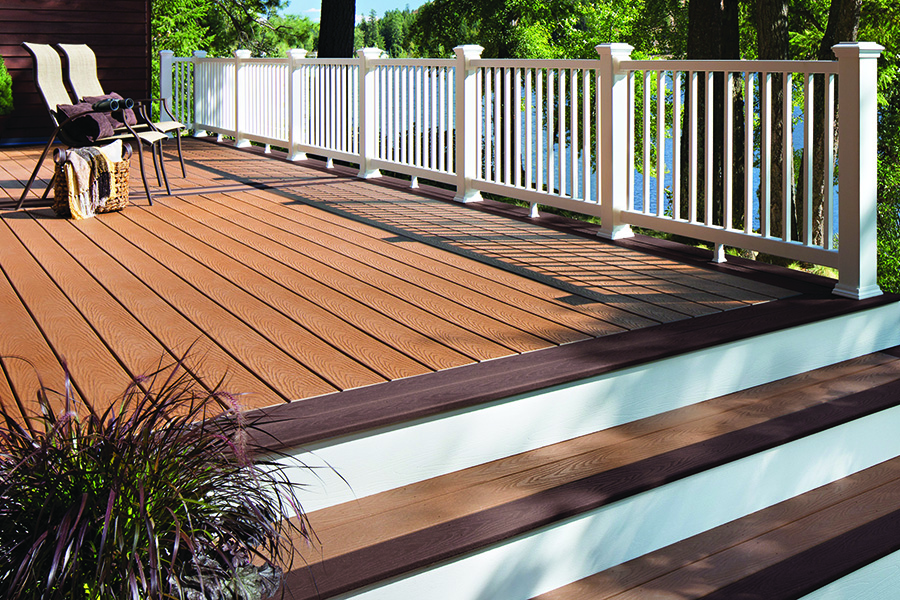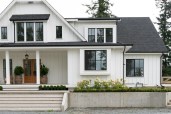Added Variety in Wood
Synthetics get a lot of attention, but wood decking still has the largest market share: roughly 70%, by Principia’s estimate. A key reason is that standard pressure-treated southern pine has a huge price advantage, plus, it’s familiar to both homeowners and builders, and it’s available just about anywhere. But even in the wood decking category, change is afoot. Two relatively unknown types of wood decking, thermally modified and acetylated, are finding their way into the market, as is a new type of color-infused pressure-treated decking.
Thermally modified wood is a transplant from Europe, where it has been available for years. During the treatment process, wood is kiln heated up to 500º F. The wood doesn’t catch fire because oxygen has been removed from the kiln, but heat does change the wood’s properties. It becomes harder, more brittle, more dimensionally stable, and more resistant to water absorption and rot.
There are at least two brands of thermally modified wood in the U.S.: EcoDeck, made with No. 1 southern yellow pine, and Arbor Wood, which sells both ash and red oak decking.
Acetylated wood also originated in Europe, but the process has since been developed in the U.S. by the Eastern Chemical Co. Acetic acid is used to force a chemical change in the wood, making it more dimensionally stable and water and insect resistant.
Although much more expensive than conventionally treated lumber, acetylated wood doesn’t retain any nasty chemicals. One brand, Accoya, is guaranteed for 50 years in above-ground applications. Eastman’s version, called Perennial Wood, is guaranteed for 25 years against decay.
Even pressure-treated pine is getting a facelift. Universal Forest Products now sells a type called ProWood Dura Color, which has been color-infused during the treatment process. It comes with a two-year warranty against fading and a lifetime warranty against termites and rot. Unlike decking that has been painted or treated with a solid-body stain, it still looks like wood, the manufacturer says, and is compatible with aluminum building products. The cost: less than $1 per linear foot.
Osmose, which developed the technology, says that color-infused decking is between 15% to 20% more expensive than standard treated wood.
But the new-generation wood decking products are not in high demand. At least not yet. “It’s going to be a tough sell to get them to move over,” Costa says. “For us, they’re not really a big mover, and I don’t think they’re going to be any time soon without a real education campaign.”


